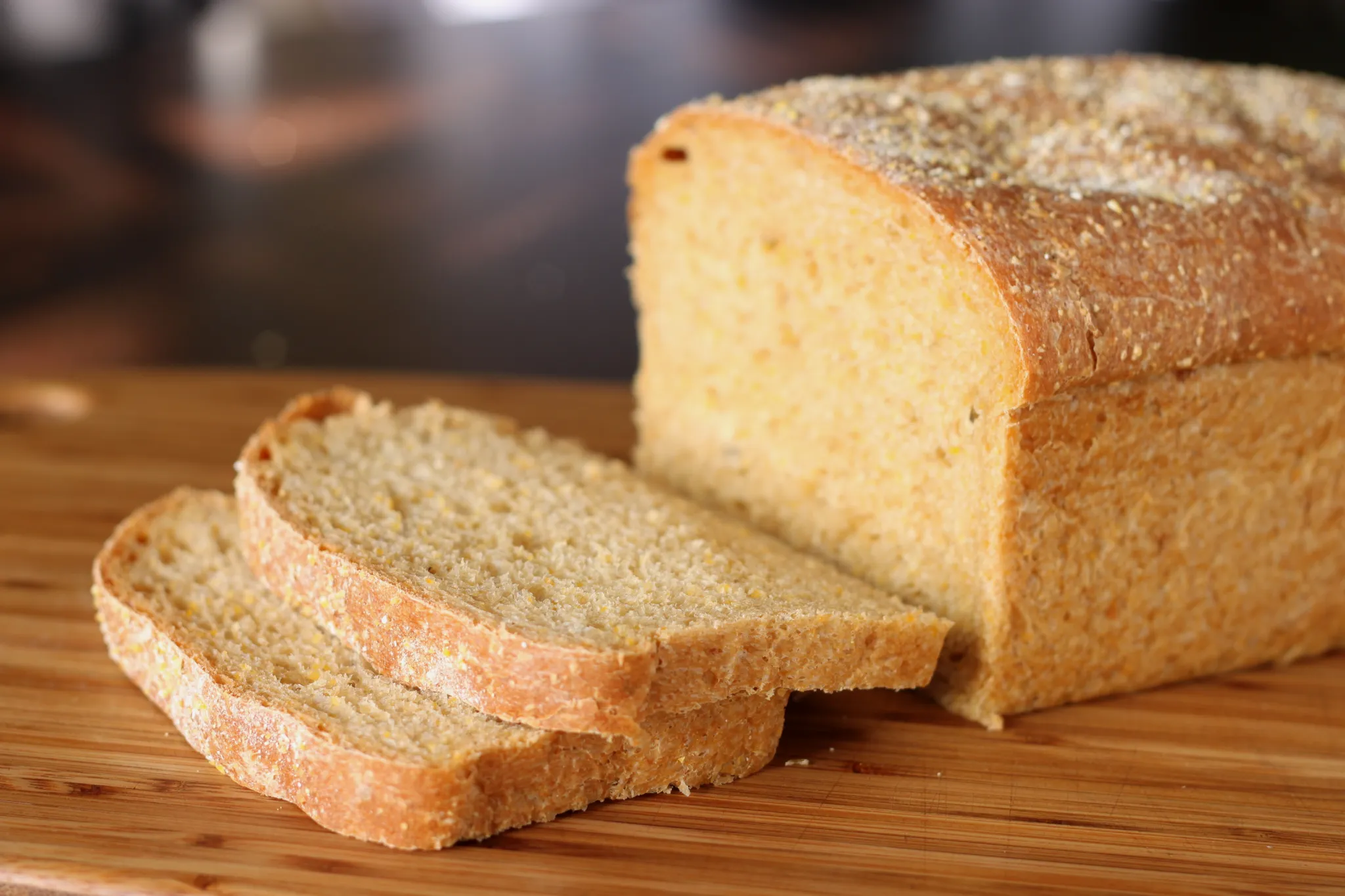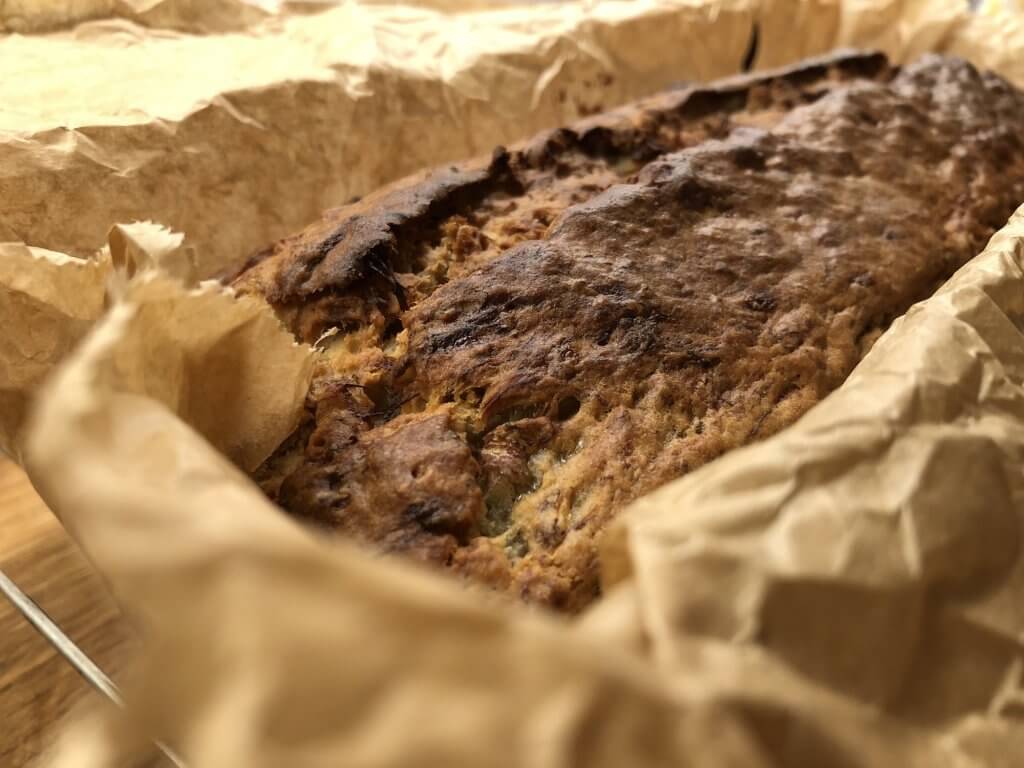
Are you in the mood for a delicious homemade treat? Look no further than the recipe right on the back of your flour bag! That’s right, you can whip up a mouthwatering batch of banana bread using the simple instructions found on the packaging. Whether you’re an experienced baker or just starting out, this recipe is sure to satisfy your cravings and impress your friends and family. So grab your apron and get ready to bake up a warm and comforting loaf of banana bread that will have everyone asking for seconds!
Imagine the sweet aroma of freshly baked banana bread wafting through your kitchen. With just a few basic ingredients and a trusty flour bag, you can create a delightful treat that is perfect for any occasion. The beauty of this recipe is its simplicity – no need to search for complicated instructions or special ingredients. Everything you need is right there on the flour bag, making it easy for even the most novice baker to achieve delicious results. So why not give it a try and indulge in a slice of warm, moist banana bread that will leave you craving more?
There’s something undeniably comforting about the taste of homemade banana bread. And when the recipe is conveniently located on the back of your flour bag, it’s even easier to enjoy this classic treat. From the first bite to the last, you’ll savor the moistness of the bread, the sweetness of the bananas, and the subtle notes of cinnamon. So why wait? Grab your flour bag, preheat your oven, and get ready to bake a loaf of banana bread that will bring joy to your taste buds and warmth to your home.
Step 1: Gather Ingredients
Making banana bread is a delightful way to use up those overripe bananas sitting on your kitchen counter. The recipe on the back of a flour bag makes it incredibly easy to whip up a delicious loaf of banana bread. So, let’s get started!
To begin, you’ll need to gather the following ingredients:
- 3 ripe bananas: Look for bananas that have turned golden yellow with brown speckles. These are the perfect ripeness for banana bread, as they are sweeter and easier to mash.
- 1 ¾ cups all-purpose flour: This is the base of your banana bread and gives it a lovely texture.
- 1 ½ teaspoons baking powder: This is the leavening agent that helps your bread rise beautifully.
- ½ teaspoon baking soda: Baking soda helps to balance the acidity of the bananas and adds to the lightness of the bread.
- ½ teaspoon salt: Salt enhances the flavor of the other ingredients and helps to bring out the sweetness of the bananas.
- ½ cup unsalted butter, melted: Melted butter adds richness and moisture to your banana bread.
- 1 cup granulated sugar: Sugar not only sweetens the bread but also helps to create a moist and tender crumb.
- 2 large eggs: Eggs act as a binder and provide structure to your banana bread.
- 1 teaspoon vanilla extract: Vanilla extract adds a wonderful aroma and enhances the overall flavor of your bread.
- ½ cup chopped nuts (optional): If you like a bit of crunch in your banana bread, add some chopped nuts like walnuts or pecans.
Step 2: Preheat the Oven
Now that you’ve gathered all the necessary ingredients for your homemade banana bread, it’s time to preheat the oven. Preheating ensures that your bread bakes evenly and rises to perfection. Here’s how to do it:
- Set the temperature: Look for the temperature recommendation on the back of the flour bag recipe. Most banana bread recipes suggest preheating the oven to 350°F (175°C). This temperature allows the bread to cook thoroughly without burning the edges.
- Give it time to heat up: Preheating the oven may take a while, so be patient. It usually takes about 10-15 minutes for the oven to reach the desired temperature. While you wait, you can use this time to prepare your baking pan by greasing it or lining it with parchment paper.
- Check with an oven thermometer: Some ovens may not accurately display the temperature, so it’s a good idea to use an oven thermometer to ensure accuracy. Simply place the thermometer on the center rack of the oven and wait for it to stabilize. This will give you an accurate reading of the temperature inside the oven.
- Avoid opening the oven door too often: Once the oven reaches the desired temperature, try to resist the temptation to open the oven door frequently. Opening the door releases heat and can cause the temperature to fluctuate, which may affect the baking process.
By following these simple steps, you’ll have your oven preheated and ready for the next stage of baking your delicious banana bread. The preheating process ensures that your bread bakes evenly and rises beautifully, resulting in a moist and flavorful treat that will fill your kitchen with a delightful aroma.
Step 3: Mash the Bananas
Now that you have gathered all the necessary ingredients, it’s time to get started on creating the perfect banana bread. The key to achieving that moist and flavorful texture lies in properly mashing the bananas. This step helps release their natural sweetness and allows them to incorporate smoothly into the batter.
To begin, peel the ripe bananas and place them in a large bowl. You can use a fork, a potato masher, or even the back of a spoon to mash the bananas. Mash them until they reach a smooth consistency, with only a few small lumps remaining. It’s perfectly fine if you prefer a slightly chunkier texture, as it will add some extra bites of banana goodness to your bread.
The ripeness of your bananas is crucial in this step. Look for bananas that are yellow with brown spots. These bananas are at their peak ripeness and will provide the best flavor. Overripe bananas with heavily browned skins are even better, as they have a sweeter taste and are easier to mash.
If you find yourself with some unripe bananas on hand and can’t wait for them to ripen naturally, there’s a handy trick you can try. Place the bananas on a baking sheet and bake them in a preheated oven at 300°F (150°C) for about 15 minutes. This gentle heat will speed up the ripening process, making them easier to mash.
Once you have mashed the bananas to your desired consistency, you can move on to the next step in the recipe. Remember, the mashed bananas are the star of this banana bread, imparting their natural sweetness and creating that unmistakable aroma. So take your time and enjoy the process of mashing them, knowing that each stroke of the fork brings you closer to a delightful homemade treat.

Now that you have successfully mashed the bananas, let’s move on to the next step: mixing the wet ingredients.
Step 4: Mix Dry Ingredients
Now that you have mashed the ripe bananas to perfection, it’s time to move on to the next step: mixing the dry ingredients. This step is crucial in creating the perfect texture and flavor in your banana bread.
To start, gather the basic dry ingredients listed in the recipe on the back of the flour bag. You’ll need all-purpose flour, baking powder, baking soda, and a pinch of salt. These simple ingredients work together to give your banana bread the right amount of rise and balance.
Measure out the required amount of flour and sift it into a large mixing bowl. Sifting helps to remove any lumps and aerates the flour, resulting in a lighter and fluffier bread. Add the baking powder, baking soda, and salt to the flour, and give it a gentle mix with a whisk or a fork. This ensures that all the dry ingredients are evenly distributed throughout the batter.
Let’s talk about the importance of measuring your ingredients accurately. Baking is a science, and precise measurements are crucial for achieving the desired results. Use measuring cups and spoons to ensure you’re adding the right amount of each ingredient. A little too much or too little of something could throw off the balance and texture of your banana bread.
Once you’ve mixed the dry ingredients, it’s time to incorporate them into the wet mixture. Gradually add the dry mixture to the bowl containing the mashed bananas, melted butter, granulated sugar, eggs, and vanilla extract. Use a spatula or a wooden spoon to gently fold the dry ingredients into the wet mixture. Be careful not to overmix, as this can lead to a dense and tough bread.

« Enhancing Banana Value: Nutritional Benefits, Superfood Pairings, and Creative Recipes
Delicious Banana Pudding Recipe on Vanilla Wafers – Step-by-Step Instructions »
And there you have it! Your dry ingredients are now mixed into the wet mixture, and you’re one step closer to enjoying a delicious homemade banana bread. The next step will involve combining everything together to create a smooth and luscious batter. Stay tuned!
Remember, take your time and enjoy the process. Baking banana bread is not only about the end result but also about the joy of creating something delicious from scratch. So, keep that smile on your face and get ready for the next step in this delightful baking journey.
Step 5: Combine Wet and Dry Ingredients
Now that you have prepared the wet and dry mixtures, it’s time to bring them together to create a delicious batter for your banana bread. Combining the two is an essential step in the process, as it ensures that all the flavors and ingredients are evenly distributed throughout the bread.
To begin, make a well in the center of the dry ingredients. This simply means creating a little hole or indentation in the middle of the bowl. This will act as a space for the wet ingredients to be poured into.
Next, pour the wet mixture into the well. This includes the mashed bananas, eggs, melted butter, and any other liquids you may have incorporated. The well will help prevent the mixture from spilling over the sides of the bowl, making it easier to mix everything together.
Using a spatula or a wooden spoon, gently stir the wet and dry ingredients together. Be careful not to overmix the batter, as this can result in a dense and tough texture. Aim for a smooth and well-combined mixture, with no streaks of dry ingredients remaining.
As you stir, you’ll notice the batter start to come together and the aroma of the ripe bananas will fill the air. It’s a delightful moment that signifies your homemade banana bread is coming to life.
Once the wet and dry ingredients are fully combined, stop mixing. Overmixing can lead to a less fluffy and tender bread. Remember, a few lumps in the batter are perfectly fine.
With the wet and dry ingredients combined, you’re one step closer to enjoying a warm slice of freshly baked banana bread. But before you can do that, there’s one more crucial step: baking the bread to perfection. Keep reading to learn the final step in our banana bread adventure.
Step 6: Pour Batter into Loaf Pan

Now that you have prepared the perfect banana bread batter, it’s time to pour it into a loaf pan! This step is essential in ensuring that your banana bread bakes evenly and has that beautiful, uniform shape.
- Preheat the oven to the recommended temperature specified in the recipe. This will ensure that your banana bread bakes properly.
- Grease the loaf pan with butter or cooking spray. This will prevent the banana bread from sticking to the pan and make it easier to remove once it’s done.
- Pour the batter into the prepared loaf pan. Use a spatula or the back of a spoon to spread the batter evenly. You want the batter to fill the pan about halfway to three-quarters full. This will allow the banana bread to rise and have a nice, fluffy texture.
- Smooth the top of the batter with the spatula to create an even surface. This will give your banana bread a professional and polished look.
- Tap the pan gently on the countertop a few times to remove any air bubbles. This will help prevent any large air pockets from forming in your banana bread.
- Place the loaf pan in the preheated oven. Make sure the pan is centered on the middle rack for even baking.
- Set a timer for the recommended baking time. Keep an eye on your banana bread as it bakes to ensure it doesn’t overcook or burn.
Remember, every oven is different, so the baking time may vary slightly. You’ll know your banana bread is done when it turns golden brown and a toothpick inserted into the center comes out clean or with a few moist crumbs.
And there you have it! Your banana bread batter is now safely nestled in the loaf pan, ready to transform into a delicious treat. So, take a moment to savor the sweet aroma filling your kitchen and get ready to enjoy the fruits of your labor.
Step 7: Bake the Banana Bread
Now that you’ve prepared the batter, it’s time to bake your delicious homemade banana bread. This step is crucial in transforming your mixture into a moist and flavorful loaf. Follow these simple instructions to ensure your banana bread turns out just right:
- Preheat your oven to 350°F (175°C). It’s important to have the oven at the right temperature to guarantee even baking.
- Grease a loaf pan with butter or cooking spray to prevent the banana bread from sticking to the sides.
- Pour the batter into the greased loaf pan. Use a spatula to scrape every last bit of the batter from the bowl. Spread it evenly to ensure even baking and a uniform loaf shape.
- Tap the loaf pan gently on the counter a few times. This helps remove any air bubbles trapped in the batter, resulting in a more even texture.
- Place the loaf pan in the preheated oven on the middle rack. This ensures that the bread bakes evenly and doesn’t become too dark on the top or bottom.
- Bake the banana bread for approximately 50-60 minutes. Keep an eye on it after the 45-minute mark, as baking times can vary depending on your oven. To check if it’s done, insert a toothpick into the center of the bread. If it comes out clean or with just a few crumbs clinging to it, your banana bread is ready.
- Once baked, carefully remove the loaf pan from the oven using oven mitts or a thick kitchen towel. Place it on a wire rack to cool for about 15-20 minutes. Cooling the bread in the pan prevents it from breaking apart when you remove it.
- After the initial cooling period, gently run a butter knife around the edges of the pan to loosen the bread. Then, turn the pan upside down and gently tap it on the counter to release the bread.
Step 8: Cool and Serve
Now that your banana bread is baked to perfection, it’s time to let it cool and get ready to enjoy the deliciousness. Follow these steps to ensure that your banana bread is cooled properly and ready to be devoured:

1. Cool in the Pan: Once you remove the banana bread from the oven, resist the temptation to dive right in. Let it cool in the pan for about 10 to 15 minutes. This allows the bread to set and firm up a bit, making it easier to handle.
2. Release the Bread: After the initial cooling period, it’s time to release the banana bread from the pan. Take a butter knife and gently run it around the edges of the pan to loosen the bread. This helps prevent any sticking when you try to remove it later.
3. Tap and Flip: Place a cutting board or a cooling rack on top of the pan. Hold onto the pan and the board or rack firmly and carefully flip them over together. Gently tap the bottom of the pan to encourage the bread to release. With a little bit of luck, the bread should slide out onto the board or rack.
4. Cool Completely: Allow your banana bread to cool completely before slicing and serving. This usually takes about an hour or so. The cooling process ensures that the flavors meld together and the bread achieves its ideal texture.
5. Slice and Enjoy: Once your banana bread has cooled, it’s time to slice it into thick, moist, and flavorful pieces. Grab a knife, cut yourself a generous slice, and savor every bite. You can enjoy it as is or spread a little bit of butter or cream cheese on top for an extra indulgence.

Remember, homemade banana bread is best enjoyed fresh. If you have any leftovers, store them in an airtight container at room temperature for up to 3 days. You can also freeze individual slices for longer storage.
So, go ahead and take a moment to admire your creation. The aroma of freshly baked banana bread, the golden color, and the delectable taste are all a testament to your baking skills. Enjoy every bite and share the joy of homemade goodness with your loved ones.
Conclusion
Now that you have the step-by-step instructions, you’re ready to make your own delicious homemade banana bread using the recipe on the back of a flour bag. Remember, the key to success lies in properly mashing the bananas and accurately measuring the ingredients. Mixing the dry ingredients thoroughly will ensure a perfect texture and flavor. Once you’ve poured the batter into a greased loaf pan and tapped out any air bubbles, it’s time to bake your creation. After baking, be sure to cool the bread in the pan before releasing it by running a butter knife around the edges and tapping the pan on the counter. Finally, savor the joy of creating something delicious from scratch as you enjoy your freshly baked banana bread. Happy baking!

















